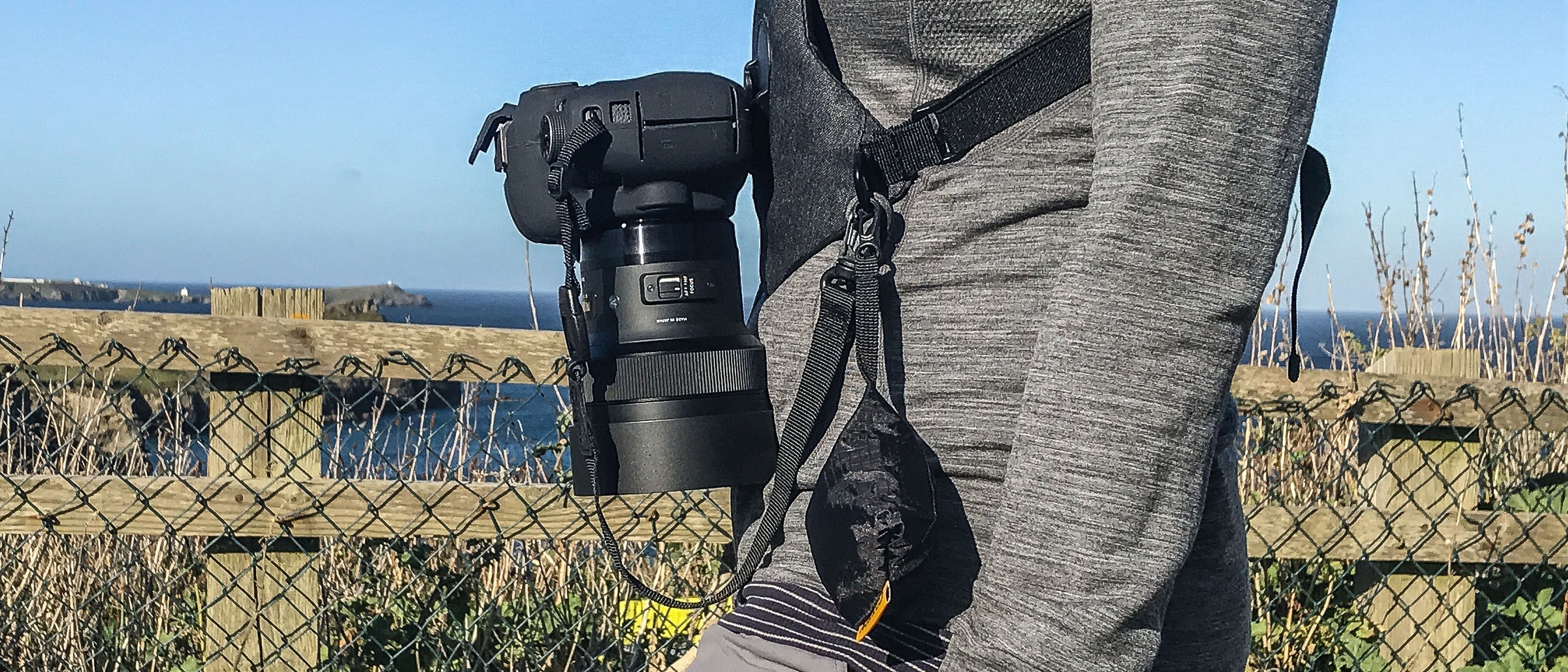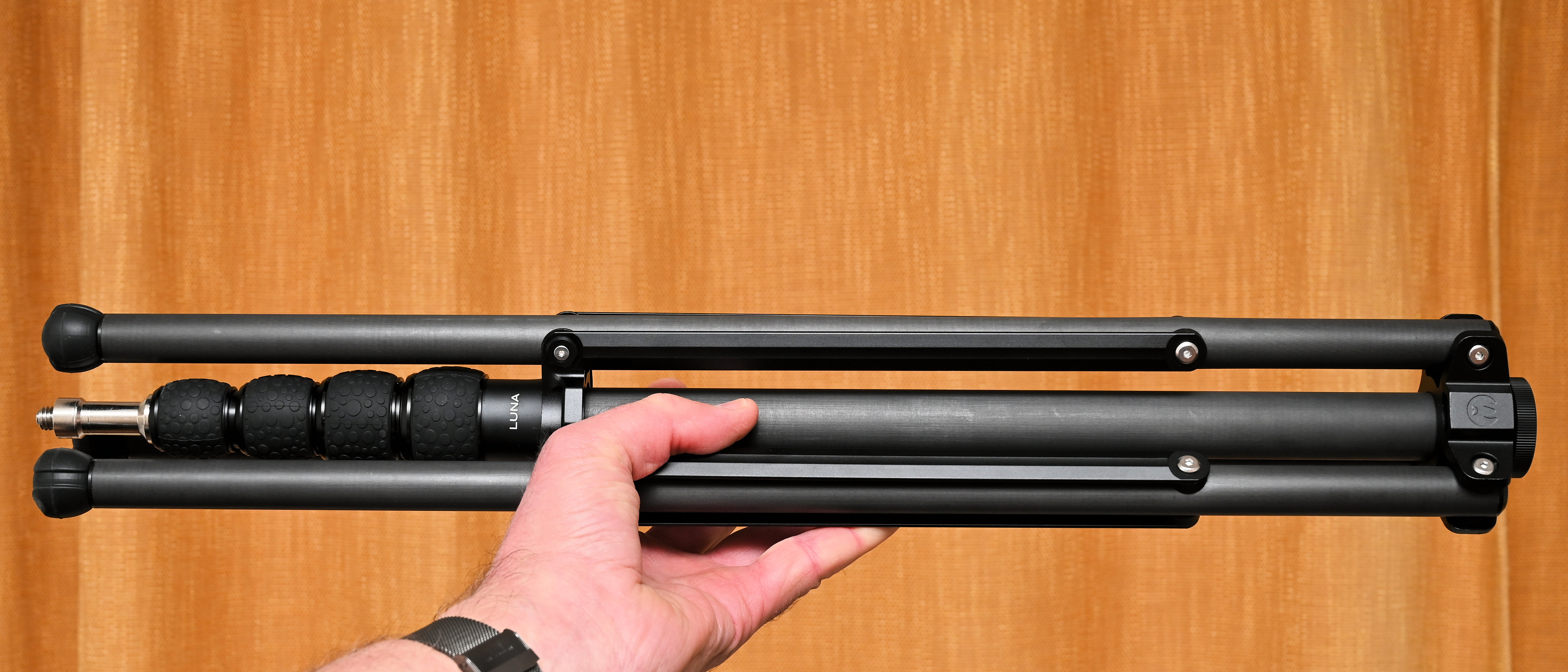Digital Camera World Verdict
Complete with a twist-and-lock mechanism for added security, this well made and comfortable harness puts a DSLR or mirrorless system camera in the center of your chest to make photography hands-free and hassle-free.
Pros
- +
+ Secure twist-and-lock system
- +
+ Padded shoulder strap
- +
+ Tough build quality
Cons
- -
Allen key needs storing
- -
Rain cover is easy to lose
Why you can trust Digital Camera World
You agonized over buying your camera, but when you’re out and about you keep it in a backpack and only pull it occasionally to put on a tripod. What a waste! Cue the Cotton Carrier Skout, a sling-style harness that keeps your DSLR or mirrorless camera easily accessible and, just as importantly, completely safe while you’re outdoors.
It’s perfect for travel and urban photography, though harnesses can look a little awkward. Yes, they do make you look like you take your photography very seriously, and the grey or camouflage Skout is no different. A camera harness that straps around a shoulder and torso, its main triangular pad sits on the chest. That’s where you clip-on a camera.
Cotton Carrier Skout: design & handling
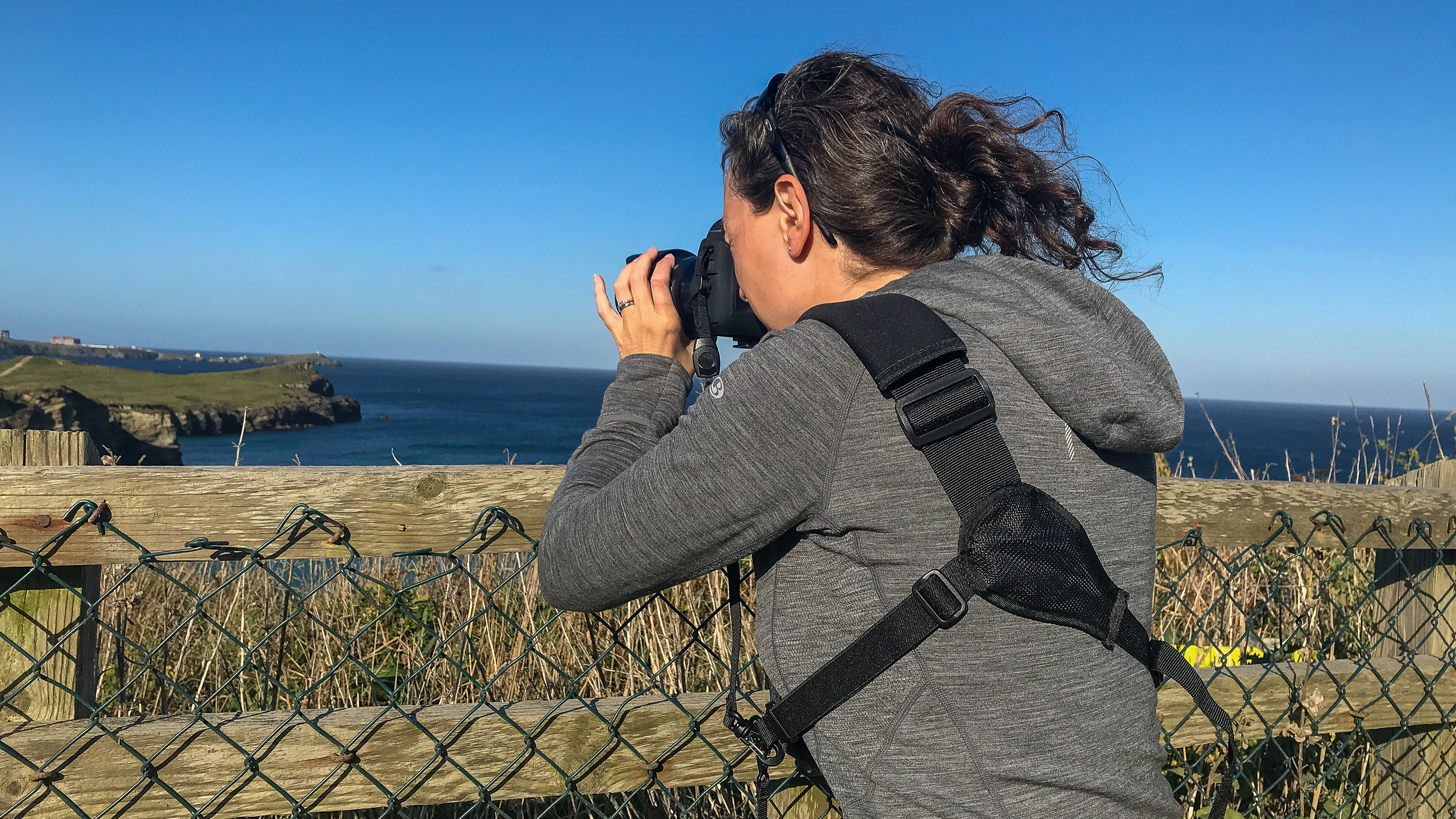
Skout’s design initially seems to be largely about safety, with the real engineering secret sauce being a patented twist-and-lock mechanism on the camera and on the harness. First, you attach an aluminum clasp to your camera’s 1/4-inch tripod thread. It’s coin-sized so doesn’t interfere with battery covers. An Allen key is provided to make it a tough and true connection, but mostly it’s there for reassurance. Yes, having an Allen key to store is a little irritating, but there is a small zipped pocket on the back of the pad to store it in. However, an all-in-one screw-on design would be better.
Skout requires a twist and lock motion; you place the clasp on the camera’s undercarriage into the runway on the pad with the lens facing away from you, then turn the camera down to face the floor. That locks it into place so it can’t fall out. Just in case you don’t trust that clasp, an additional tether is supplied that hooks onto one of your camera’s neck strap loops (since they’re now redundant) and attaches to the harness itself, resembling the emergency back-up safety rope used by rock climbers. So if you do fail to put your camera back into the Skout’s properly, your camera is only going to dangle, not hit the ground.
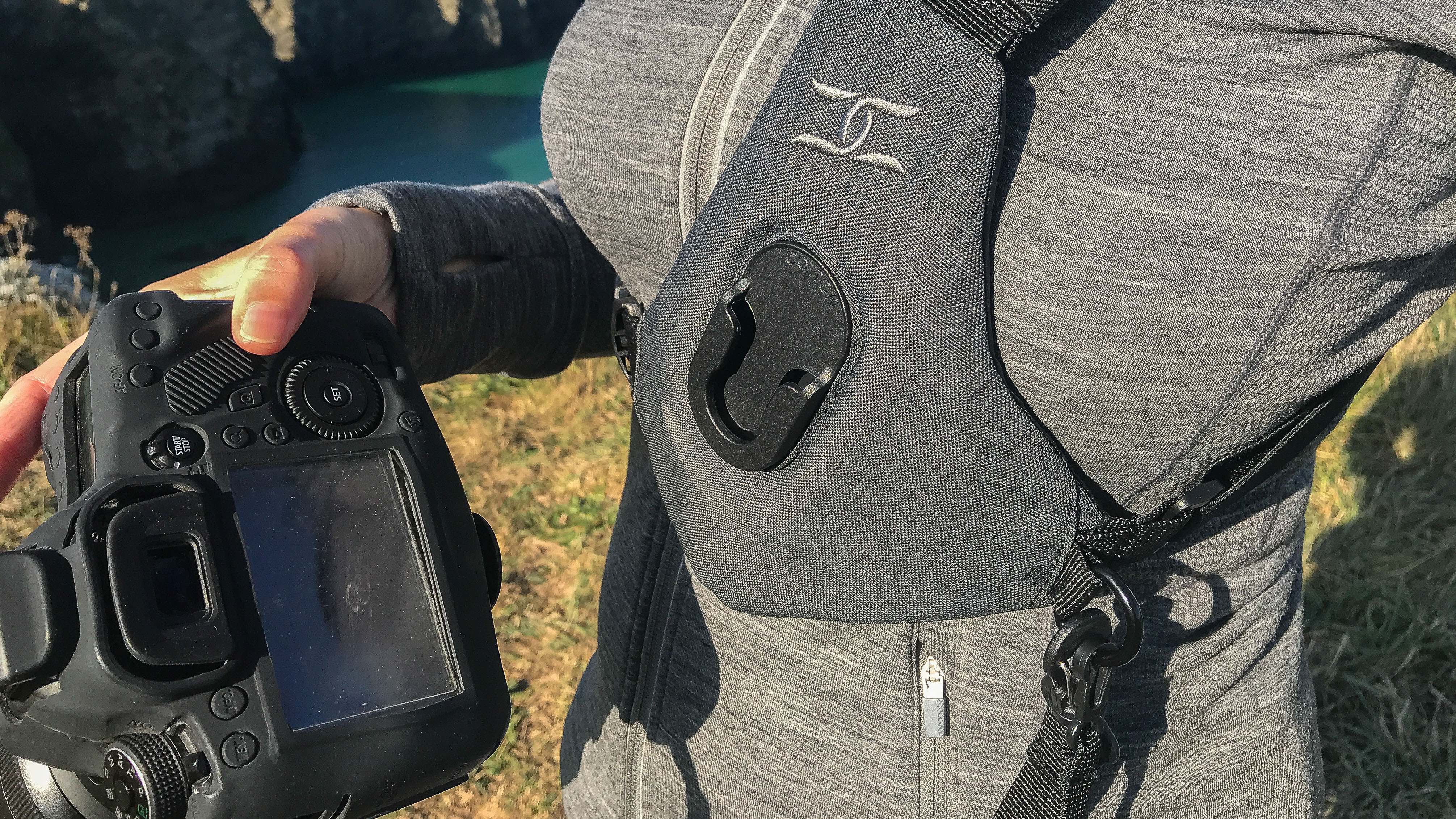
Wait.Your camera’s tripod thread is now busy? If it’s occupied by a clasp surely it can’t be used for … a tripod? Luckily, Cotton Carrier thought of that, and there’s a 1/4-inch tripod thread provided on the clasp itself. Phew. Tested with a large Manfrotto tripod, the clasp didn’t get in the way or reduce stability, merely pushing the camera forward slightly.
Granted, if your tripod has a proprietary clasp – as our does – then attaching it to the Skout’s mechanism does mean your camera’s undercarriage gets rather busy, but it’s all perfectly functional. It’s really important to attach the clasp to the camera in exactly the way the instruction booklet (yes, we read it!) says because only when it’s correctly orientated does the clasp snap into the pad safely.
As a final layer of protection, Skout comes with a small rain cover. It fits over a camera like a .. plastic bag with some elastic in, which is essentially what it is. It rolls-up nicely into a tiny package, but there’s nowhere specific to put it. A more built-in feel to this accessory would be welcome because we weren’t sure where to stow it (clipping it on to the harness made us feel like we were camping or backpacking).
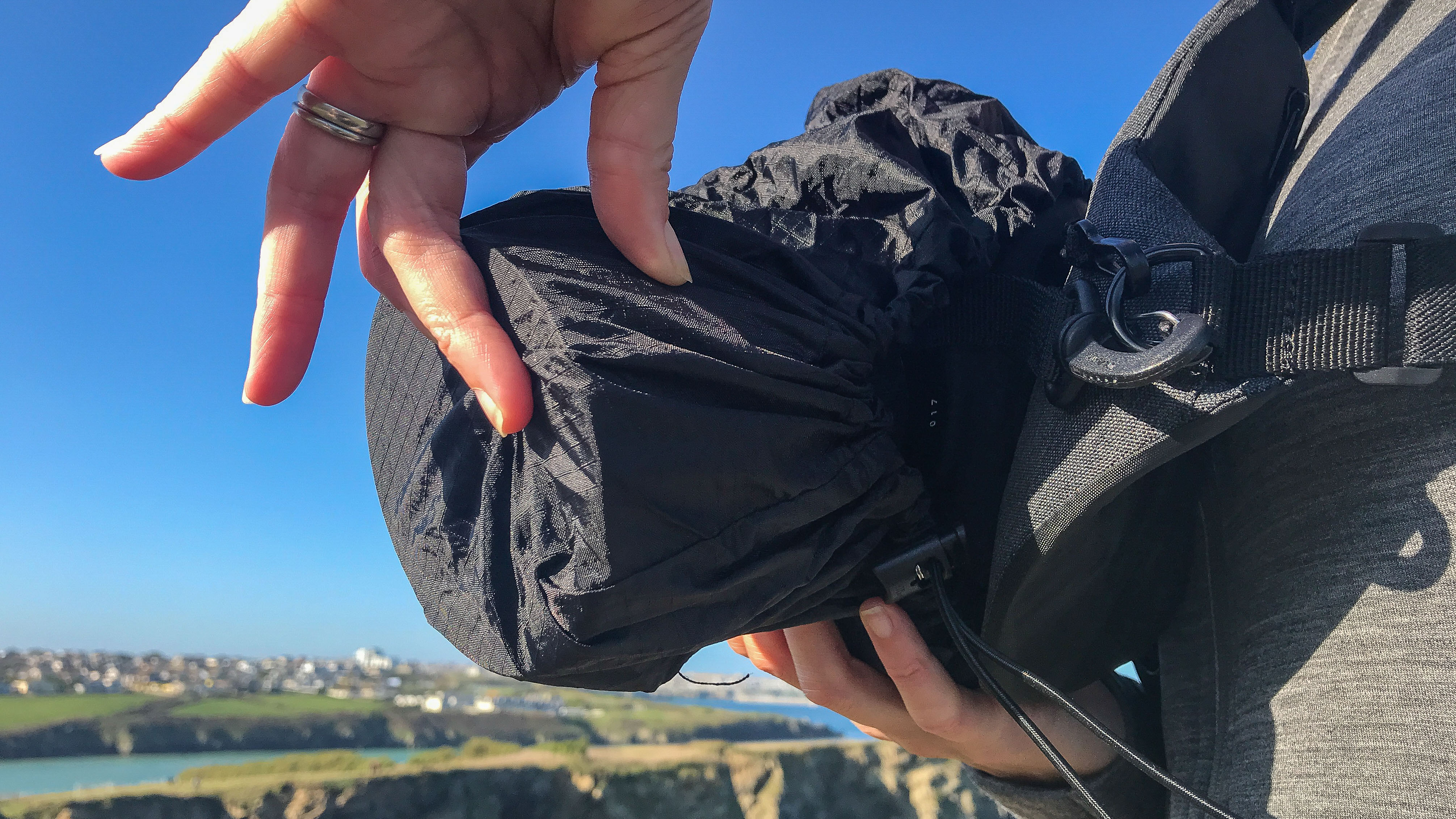
Skout is easy to put on and felt really secure, and once it’s set-up it’s a one-arm operation. However, we did have a few issues getting comfortable, and another person is really helpful for securing the straps. Once it was adjusted it fitted snugly, immeasurably helped by a well designed padded shoulder strap. However, don’t be tempted to swap Skout between different photographers too much, especially if they’re of different physical sizes, without resetting the straps.
The size of the camera you put in Skout is also important. We tried it with a Canon 6D, which worked absolutely fine, but we wouldn’t want to go much heavier than a kilo. Bigger DSLRs wearing an extended grip might struggle with balance.
Having a camera in the center of the chest feels stable, secure, and it doesn’t interfere with arms, clothes or backpacks. It’s also streets ahead of neck straps, and banishes forever those knocks to a lens from leaning forward on to rails/walls/tables.
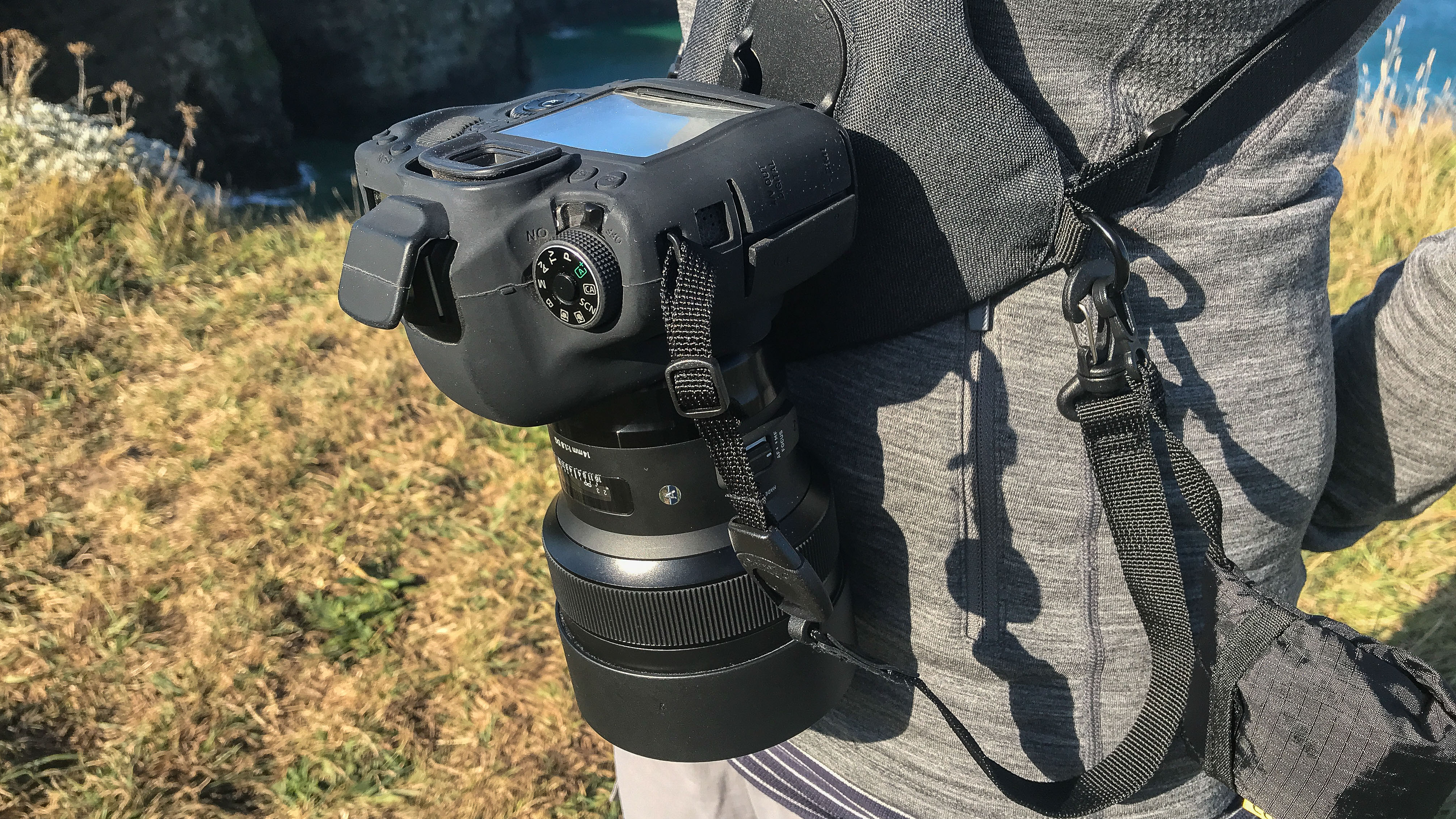
Cotton Carrier Skout: verdict
Do you need a harness? If you’re a landscape or night-scape photographer who always and only uses a tripod, you probably do not, though even then it’s nice to have a camera within easy reach while your hands are left free to set-up a tripod. However, Skout is best for anyone who prefers to take photos spontaneously; travel photography, urban photography and definitely wedding photography. It’s also great for hiking.
Skout is hard to criticize. It’s well designed, feels secure with a mid-weight DSLR, and keeps a camera within easy reach. Putting a camera in the centre of a photographers chest, Skout makes carrying a camera hands-free and hassle-free, which makes the decision to take a DSLR out and about much simpler.
After all, if the best camera is the one you have with you, why not just take your best camera?
Read more:
The best camera straps

Jamie has been writing about photography, astronomy, astro-tourism and astrophotography for over 15 years, producing content for Forbes, Space.com, Live Science, Techradar, T3, BBC Wildlife, Science Focus, Sky & Telescope, BBC Sky At Night, South China Morning Post, The Guardian, The Telegraph and Travel+Leisure.
As the editor for When Is The Next Eclipse, he has a wealth of experience, expertise and enthusiasm for astrophotography, from capturing the moon and meteor showers to solar and lunar eclipses.
He also brings a great deal of knowledge on action cameras, 360 cameras, AI cameras, camera backpacks, telescopes, gimbals, tripods and all manner of photography equipment.
